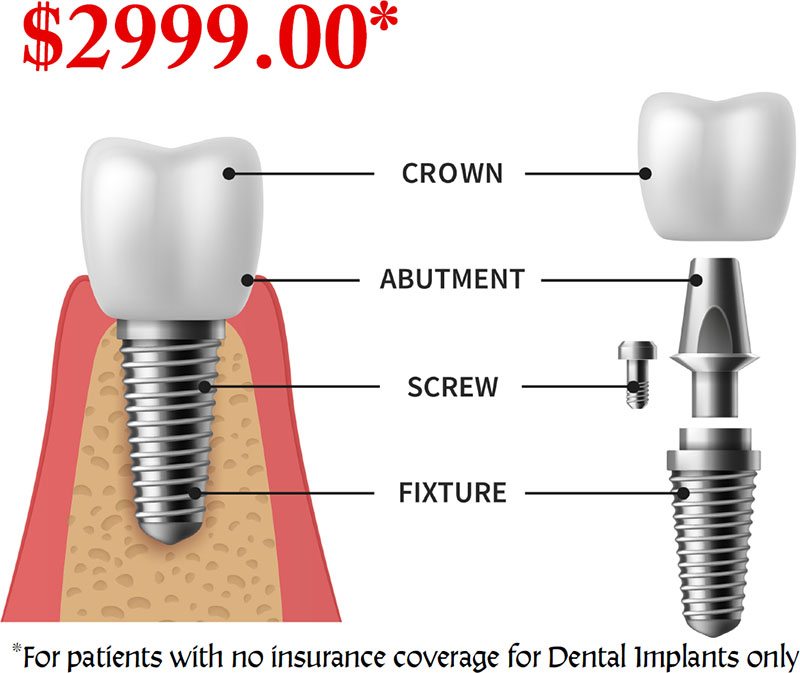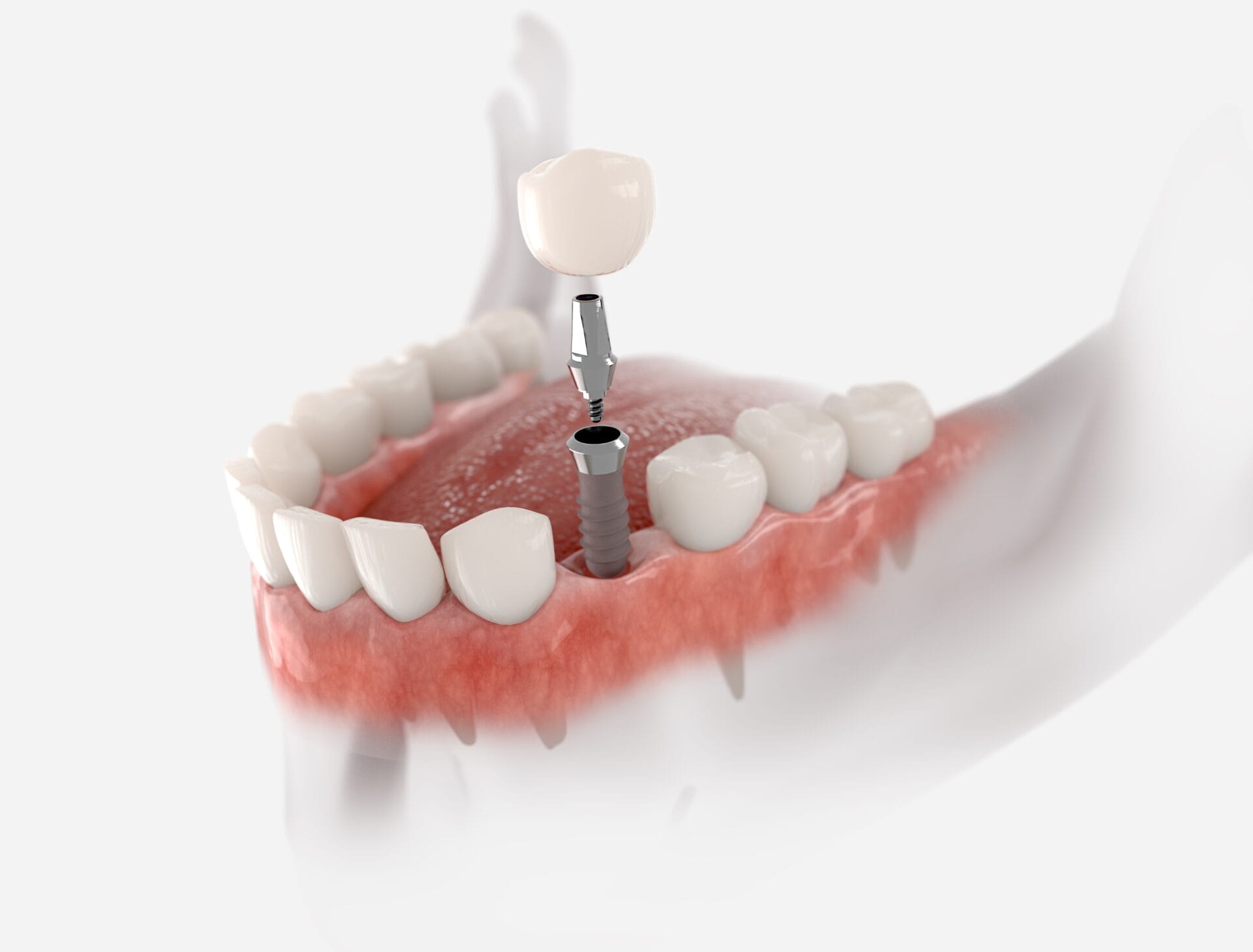Restore Capability and Appearances: Dental Implants Kent Solutions
Restore Capability and Appearances: Dental Implants Kent Solutions
Blog Article
Experience the most up to date Developments in Dental Implants Technology
As the area of dental care remains to advance, the innovations in oral implant technology have been nothing except exceptional. From the use of innovative products that boost longevity to the implementation of electronic imaging for specific positioning, these technologies are transforming the landscape of oral care. With minimally intrusive medical methods and the customization abilities of 3D printing, clients currently have actually accessibility to tailored solutions that were as soon as unbelievable. The combination of modern technology is transforming the performance of oral implants, assuring enhanced results and client contentment.
Advanced Products for Enhanced Sturdiness
In the world of oral implants innovation, the integration of advanced products has actually significantly added to enhancing sturdiness and long life of these essential dental prosthetics. The application of products such as titanium alloys, zirconia, and ceramic compounds has reinvented the area by offering boosted strength, biocompatibility, and resistance to rust.
Titanium alloys are extensively used in oral implants due to their exceptional strength-to-weight proportion, deterioration resistance, and compatibility with the body. These alloys ensure the security and durability of the dental implant by standing up to the forces put in during talking and eating, offering a trusted option for clients seeking long lasting tooth substitutes.
Zirconia, a kind of ceramic product, has actually gotten appeal for its biocompatibility and all-natural tooth-like look. Its high strength and resistance to put on make it a suitable selection for oral crowns and bridges, boosting the overall looks and capability of the dental implant.

Digital Imaging for Exact Placement
The evolution of oral implants innovation has actually further progressed with the assimilation of electronic imaging methods, guaranteeing specific positioning of these prosthetics for optimum useful and visual end results. Digital imaging plays an important role in the planning and placement of oral implants by providing detailed 3D photos of the patient's jawbone framework. This innovation permits dentists to assess bone density, find essential structures, and intend the exact placement and angle for dental implant positioning with unparalleled accuracy.
By utilizing electronic imaging, dental professionals can develop virtual medical overviews that function as a roadmap during the implant positioning procedure. These overviews are customized for each and every individual, taking right into account their one-of-a-kind composition and the desired end result. This degree of precision not only improves the success price of dental implant treatments but also lowers the risk of issues.
Moreover, electronic imaging makes it possible for dentists to picture the last prosthetic repair prior to the real positioning of implants, enabling for thorough planning and ensuring that the outcome meets the individual's visual expectations. In general, the assimilation of electronic imaging modern technology has revolutionized the field of dental implants, offering individuals an extra predictable, my site effective, and patient-specific treatment method.

Minimally Invasive Surgical Strategies


Advancements why not look here in surgical methods have caused the development of minimally intrusive methods in the field of dental implantology. These strategies aim to minimize trauma to the individual, reduce healing times, and enhance overall treatment results. Minimally invasive operations include smaller cuts, specialized tools, and advanced imaging innovations to exactly put oral implants with minimal disturbance to bordering tissues.
One key aspect of minimally intrusive techniques is the usage of led surgical procedure, where 3D imaging and computer-aided style software application are utilized to plan the implant placement with terrific accuracy. This enables a much more predictable outcome and can typically remove the requirement for extensive flap surgery.
Additionally, advancements in materials and dental implant design have actually additionally added to the success of minimally invasive techniques. Implants with enhanced surface area buildings promote quicker osseointegration, lowering the healing time required before the prosthetic remediation can be put.
3D Printing for Personalized Solutions
Using 3D printing technology in dental implantology permits the development of highly customized remedies tailored to specific client demands and anatomical variations. This advanced innovation makes it possible for dental experts to develop and fabricate oral implants with remarkable accuracy and accuracy. By utilizing electronic imaging strategies, such as cone beam you can look here calculated tomography (CBCT), detailed 3D models of the person's mouth can be created to assist the implant intending procedure.
Among the essential advantages of 3D printing in dental implantology is the ability to create patient-specific implants that perfectly fit the unique makeup of each person. This tailored method assists enhance the overall success and durability of the implant by making sure optimum fit and placement. Additionally, 3D printing permits the production of intricate geometries and intricate frameworks that would be challenging or impossible to achieve making use of traditional production methods.
Moreover, 3D printing modern technology enables dentists to improve the implantation process, decreasing surgery time and enhancing general person experience. With its capability to create tailored solutions rapidly and efficiently, 3D printing is transforming the area of oral implantology, offering clients cutting-edge treatment choices and improved results.
Integrated Innovation for Improved Functionality
Implementing cutting-edge technology in dental implantology enhances capability and accuracy, raising the requirement of care for clients undergoing implant procedures. Integrated modern technology plays an essential function in improving the overall success and durability of dental implants.
Furthermore, the combination of computer-aided style and computer-aided production (CAD/CAM) innovation enables the development of personalized implant restorations with exceptional accuracy. CAD/CAM systems use digital perceptions to make prosthetics that perfectly fit the client's distinct composition, making sure optimal convenience and capability. Additionally, using robotic-assisted surgical procedure in implant positioning boosts accuracy and minimizes the threat of human mistake.
Final Thought
In conclusion, the most recent innovations in oral implants innovation deal boosted durability with sophisticated products, exact positioning with digital imaging, minimally invasive surgical strategies, tailored remedies with 3D printing, and boosted performance with integrated modern technology - Dental implants Kent. These advancements in dental implants modern technology are revolutionizing the area and offering individuals with more efficient and efficient therapy choices for recovering their smiles and dental health
The combination of technology is reinventing the capability of oral implants, guaranteeing boosted results and person satisfaction.
The evolution of oral implants technology has further advanced with the combination of digital imaging methods, making certain specific placement of these prosthetics for optimal functional and visual outcomes. Minimally invasive surgical treatments entail smaller lacerations, specialized instruments, and advanced imaging innovations to exactly place dental implants with very little disruption to surrounding cells.
Carrying out innovative technology in oral implantology enhances functionality and precision, elevating the standard of treatment for patients undergoing dental implant procedures. Dental implants Kent. Integrated modern technology plays an essential function in enhancing the total success and toughness of oral implants
Report this page